Слайд 2Objectives
Student should be able to …
describe location, size, consistency, and other attributes

of lymphadenopathy
identify common clinical scenarios involving lymphadenopathy
identify the signs and symptoms of anemia
define the signs and symptoms of bleeding and coagulation disorders
Слайд 3Overview
This is a short lecture!
A major goal is to synthesize the lymphatic
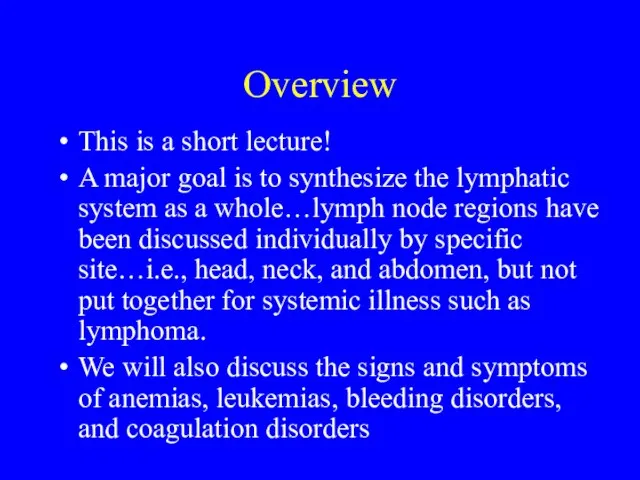
system as a whole…lymph node regions have been discussed individually by specific site…i.e., head, neck, and abdomen, but not put together for systemic illness such as lymphoma.
We will also discuss the signs and symptoms of anemias, leukemias, bleeding disorders, and coagulation disorders
Слайд 5Lymph Node Examination
Head/neck
Axillary
Inguinal/femoral
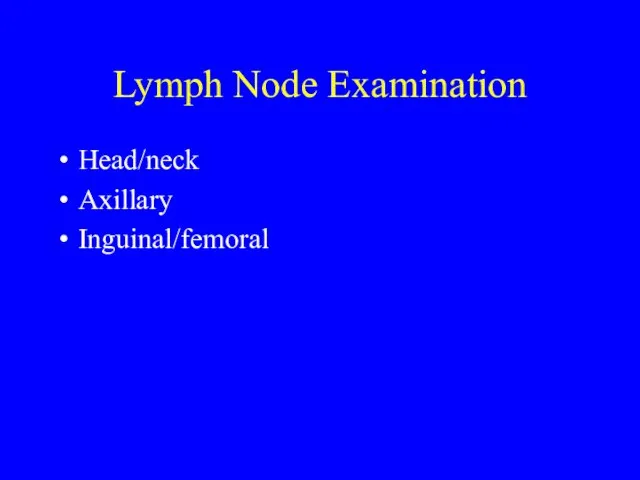
Слайд 6Head and Neck Nodes
Preauricular
Posterior auricular
Occipital
Tonsillar
Submandibular
Submental
Superficial cervical
Posterior cervical
Deep cervical
Supraclavicular

Слайд 7Axillary
A pectoral (anterior)
L lateral
P posterior
C central
Ap apical
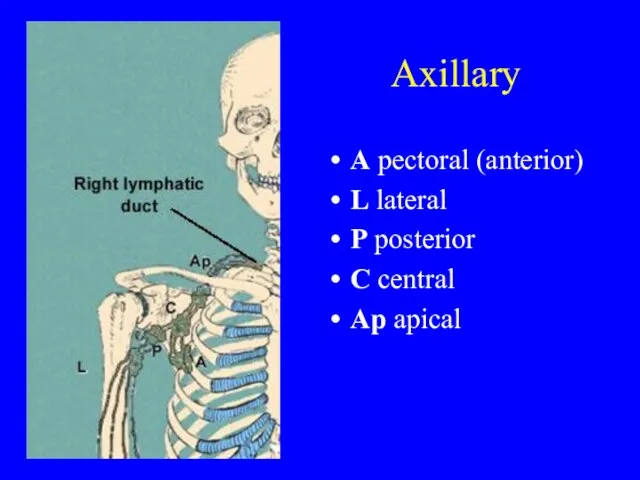
Слайд 8Inguinal/ Femoral
Horizontal group
Vertical group
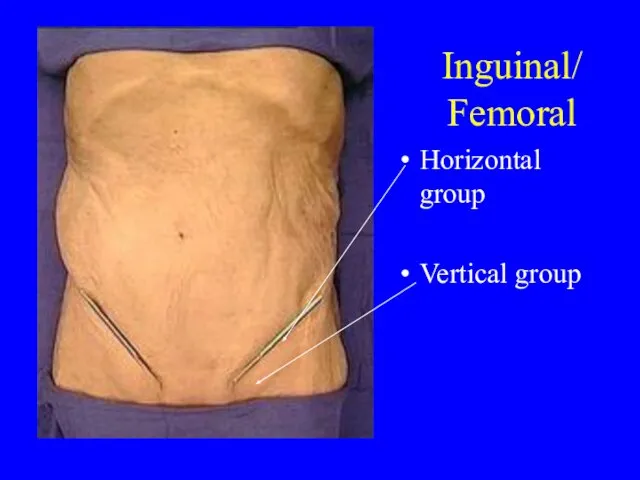
Слайд 9Descriptors of Lymphadenopathy
Location…obvious
Mobility
Size
Texture
Shape
Tender/non-tender
Associated erythema or warmth…signs of inflammation

Слайд 10Spleen
Left upper quadrant
Palpation most specific for detecting enlarged spleen (89-99% specificity)
Spleen palpable
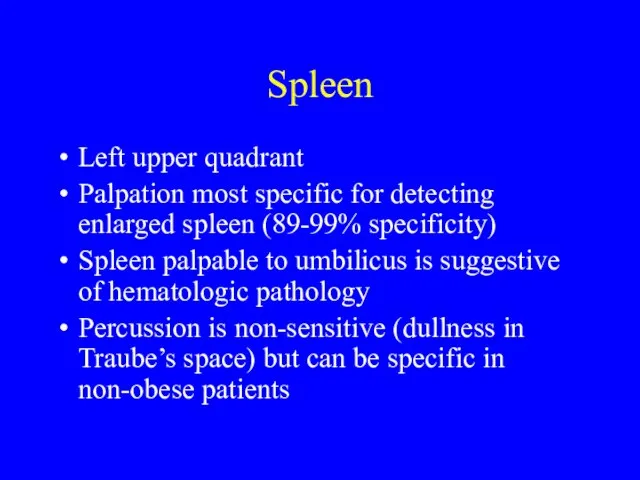
to umbilicus is suggestive of hematologic pathology
Percussion is non-sensitive (dullness in Traube’s space) but can be specific in non-obese patients
Слайд 11Case
28 yo man presents with c/o fevers, night sweats and 30 pound
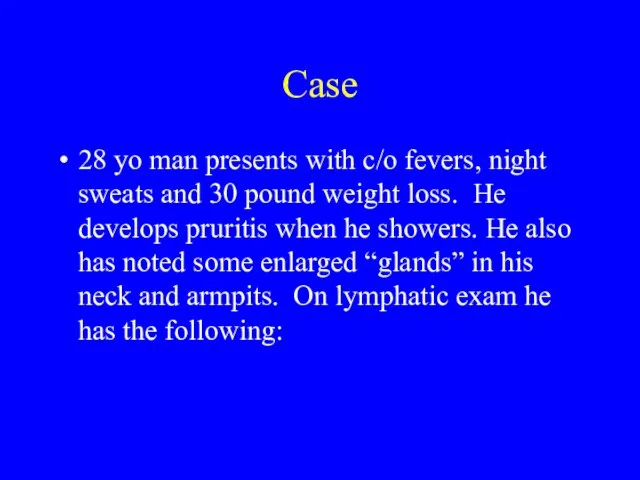
weight loss. He develops pruritis when he showers. He also has noted some enlarged “glands” in his neck and armpits. On lymphatic exam he has the following:
Слайд 12Case
painless lymphadenopathy in anterior axilla and anterior cervical as well as supraclavicular
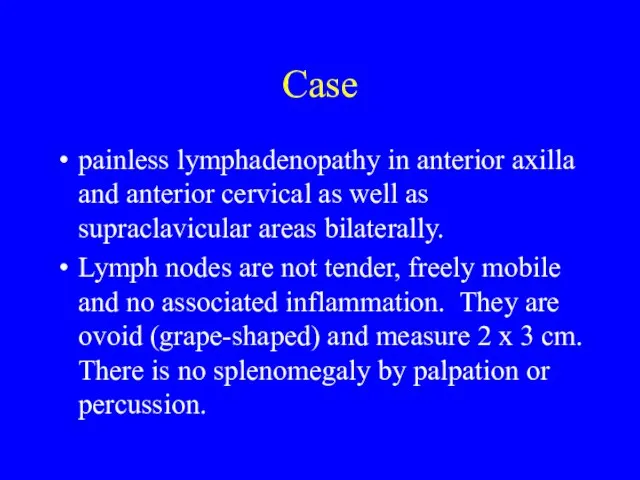
areas bilaterally.
Lymph nodes are not tender, freely mobile and no associated inflammation. They are ovoid (grape-shaped) and measure 2 x 3 cm. There is no splenomegaly by palpation or percussion.
Слайд 13Differential Diagnosis
Lymphoma
Infection
Cancer—metastatic
Granulomatous disease
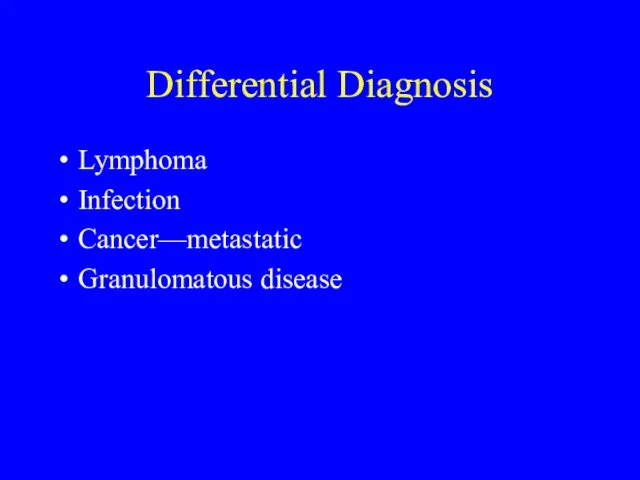
Слайд 14Anemia- Signs/Symptoms
Dyspnea on exertion
Palpitations
Angina pectoris
Intermittent claudication
Headache
Syncope
anorexia
Dizziness/vertigo
Nausea
Cold intolerance
Amenorrhea
Decrease libido/impotence
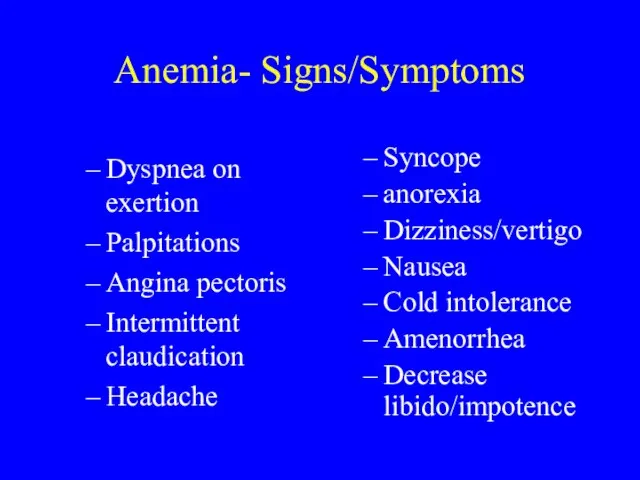
Слайд 15Anemia
Blood loss
Hemolysis/sequestration
Deficiencies
Decreased production
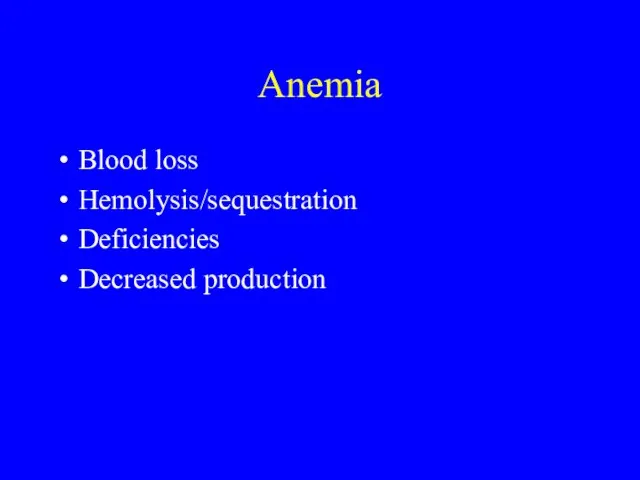
Слайд 16Symptoms
Symptoms based on acuity of HgB drop
Acute blood loss usually creates
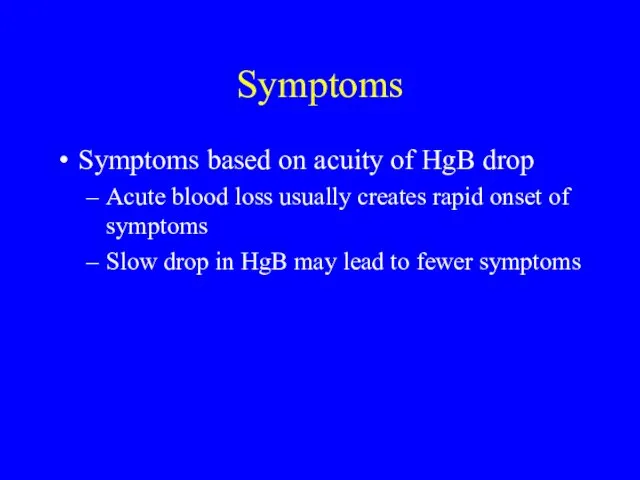
rapid onset of symptoms
Slow drop in HgB may lead to fewer symptoms
Слайд 17Anemia of Acute Blood Loss
Trauma or GI tract loss most common
Menstrual/vaginal loss
Urinary

tract
Nosebleeds leading to anemia, but not because of it!
Tachycardia and hypotension are common findings
History helps the most for these
Слайд 18Hemolysis and Sequestration
Causes for hemolytic anemias include:
Autoimmune
Drug induced
Cell membrane disorders
Hereditary
Splenomegaly can lead
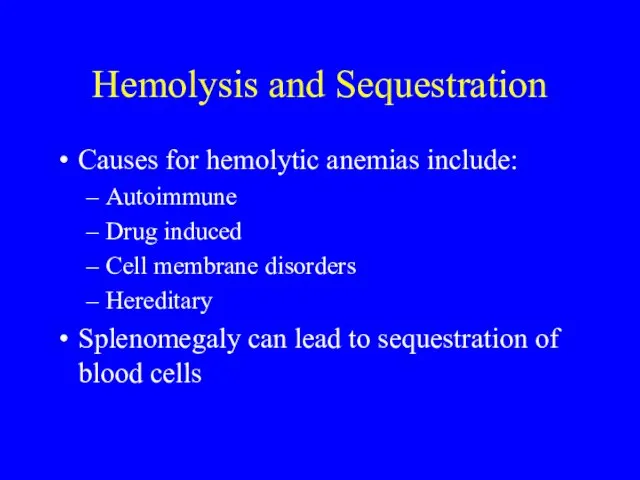
to sequestration of blood cells
Слайд 19Scleral Icterus
Yellow sclera
Can be seen in hemolysis
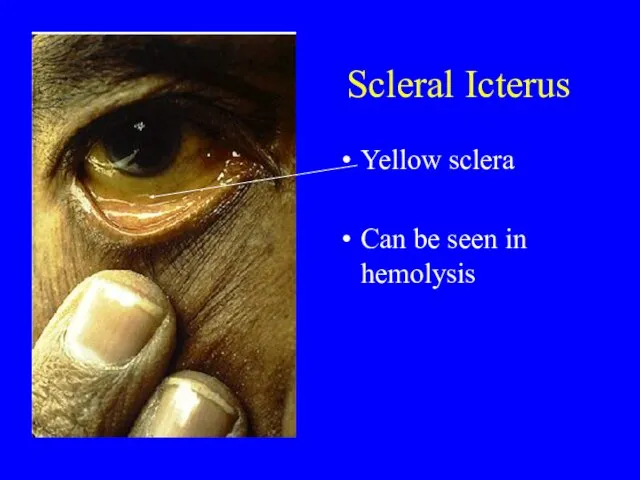
Слайд 20Deficiencies
Iron deficiency anemia is most common worldwide and in US-spoon nails and
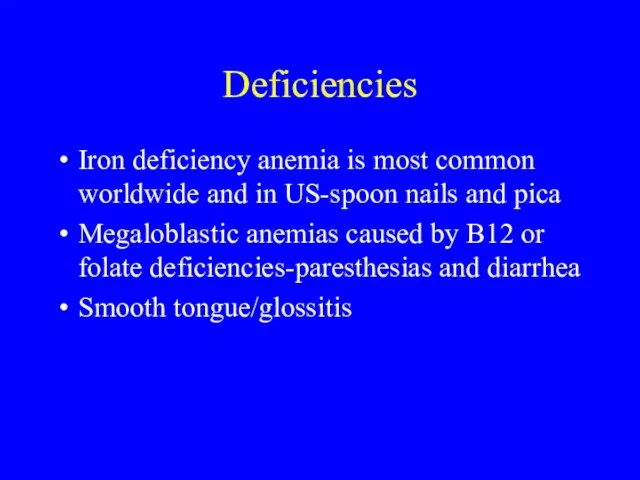
pica
Megaloblastic anemias caused by B12 or folate deficiencies-paresthesias and diarrhea
Smooth tongue/glossitis
Слайд 23Signs and Symptoms of Coagulation Disorders
Bleeding
Ecchymoses
Petechiae
Hemarthroses
Hematomas
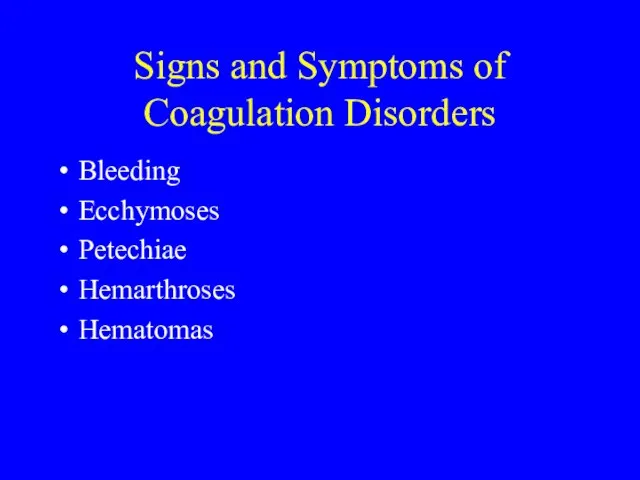
Слайд 24Platelets versus Coags
Petechiae—platelets low or dysfunctional
Ecchymoses, hematomas, hemarthroses—seen more frequently with low
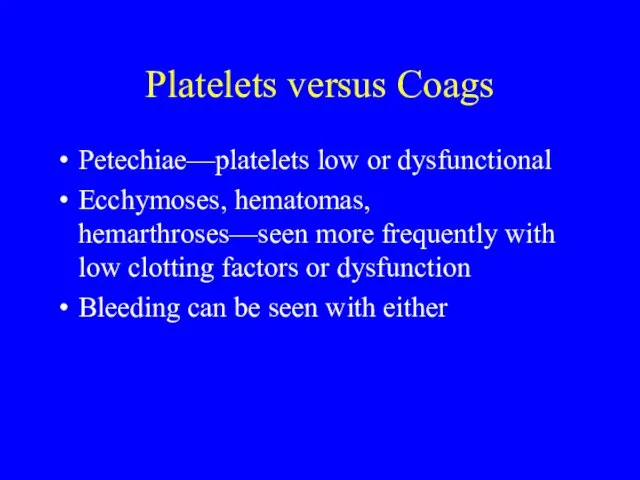
clotting factors or dysfunction
Bleeding can be seen with either



















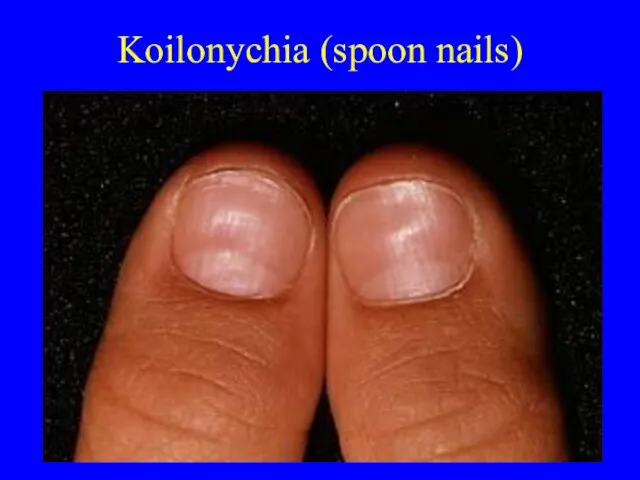
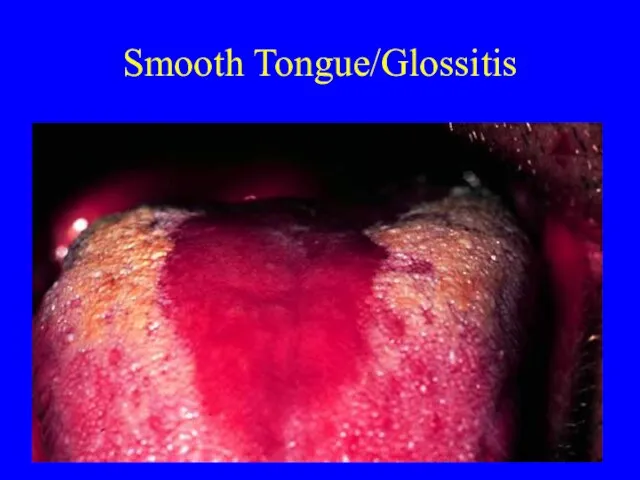



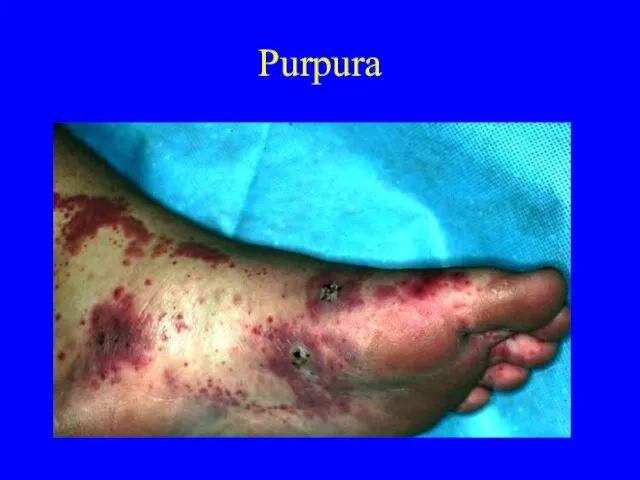
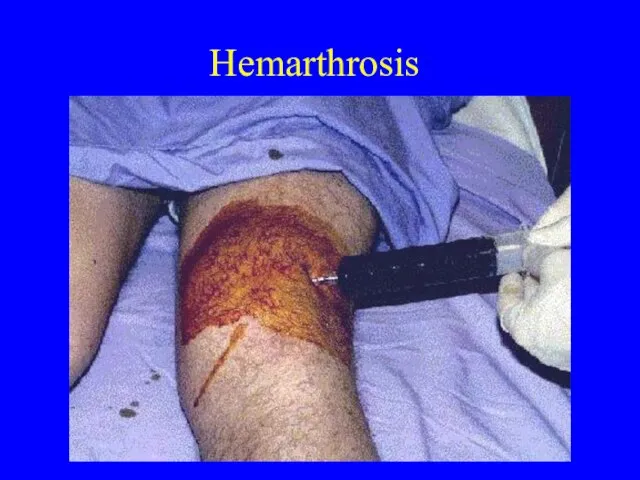
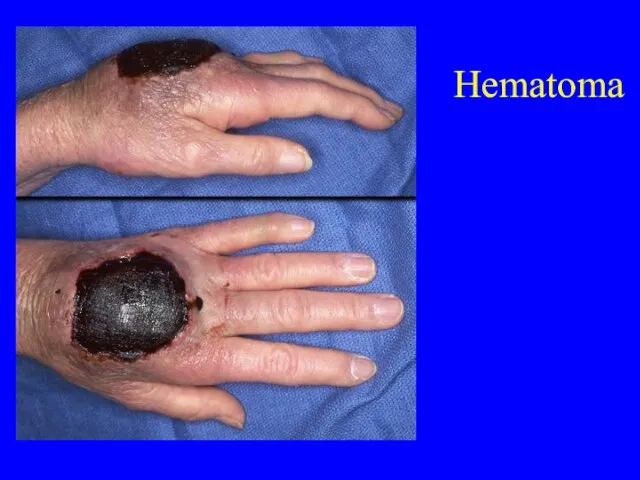
 Хроническое системное венерическое инфекционное заболевание сифилис
Хроническое системное венерическое инфекционное заболевание сифилис Систематическая ошибка. Оценка риска систематической ошибки в рандомизированном контролируемом клиническом исследовании
Систематическая ошибка. Оценка риска систематической ошибки в рандомизированном контролируемом клиническом исследовании Нарушения сократительной деятельности матки
Нарушения сократительной деятельности матки Синдром диссеминированного внутрисосудистого свёртывания крови у беременных
Синдром диссеминированного внутрисосудистого свёртывания крови у беременных Гигиена как отрасль профилактической медицины
Гигиена как отрасль профилактической медицины Транспортировка пострадавших
Транспортировка пострадавших Идиопатический легочный фиброз
Идиопатический легочный фиброз Плод, как объект родов
Плод, как объект родов Жасөспірімдерге дәрігерліккәсіптік кеңес пен бағдар беру. Оқушыларды кәсіпке бағдарлаудың медико-физиологиялық аспектілері
Жасөспірімдерге дәрігерліккәсіптік кеңес пен бағдар беру. Оқушыларды кәсіпке бағдарлаудың медико-физиологиялық аспектілері Заболевания сосудистого тракта
Заболевания сосудистого тракта Бүйрек, зәр шығару. Бүйректің рентгеноанотомиясы
Бүйрек, зәр шығару. Бүйректің рентгеноанотомиясы Что я знаю о своей профессии?
Что я знаю о своей профессии? Международный день детей, больных раком
Международный день детей, больных раком Воспаление сосудистой, нервной, гормональной систем
Воспаление сосудистой, нервной, гормональной систем Recipe. Basic prescription rules
Recipe. Basic prescription rules Все, что вы хотели знать о печени
Все, что вы хотели знать о печени Линименты. Гомогенные линименты
Линименты. Гомогенные линименты 什么是针灸技术 针灸技术 主要包括针刺技术与灸治技术 概指针灸工具、手段及其操作运用 的方法和技能。
什么是针灸技术 针灸技术 主要包括针刺技术与灸治技术 概指针灸工具、手段及其操作运用 的方法和技能。 Артерии и нервы стенок полости носа
Артерии и нервы стенок полости носа ABG case studies & interpretation
ABG case studies & interpretation Принципы анестезиологии и интенсивной терапии в условиях ограниченных ресурсов
Принципы анестезиологии и интенсивной терапии в условиях ограниченных ресурсов Определение зависимости коэффициента парного взаимодействия от температуры пар веществ
Определение зависимости коэффициента парного взаимодействия от температуры пар веществ Синдром парадоксального движения на вдохе голосовых складок
Синдром парадоксального движения на вдохе голосовых складок Справочники лекарственных средств для ветеринарии
Справочники лекарственных средств для ветеринарии Экологическая ситуация Ставропольского края и здоровье населения
Экологическая ситуация Ставропольского края и здоровье населения Актуальные аспекты заболевания ботулизмом. Медсестринский процесс
Актуальные аспекты заболевания ботулизмом. Медсестринский процесс Саламатты Қазақстан бағдарламасы
Саламатты Қазақстан бағдарламасы OPHTHALMOLOGY IN MINSK
OPHTHALMOLOGY IN MINSK